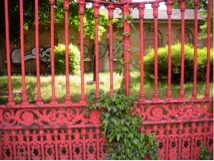As you watch the games of the XXX Olympiad, you should know that something extraordinary has been happening in a low-income neighborhood near the main Olympic stadium. A different kind of flame is being lit—one that will likely endure long after the athletes leave town.

On July 16th they won! Barely two weeks before the start of the 2012 Olympics, London’s mayor, Boris Johnson, inked an agreement that will transfer ownership of the St. Clements site to the ELCLT. In a statement issued by his office, Boris was quoted as saying: “The East London Community Land Trust at St. Clements will put local people in the driving seat and empower them to take stewardship of what will be a fantastic new neighbourhood that will boast over 200 quality homes. This is a huge step forward for everyone who has been working so hard to deliver what will be the UK’s first urban Community Land Trust, right here in London.”

In how they have structured both the ownership of the real estate and the governance of their own organization, the ELCLT has borrowed liberally from its American cousins. That a British CLT should lift ideas from CLTs over here is only fair. After all, we lifted some of our best ideas from over there.

This was neither the first time that ideas about a new approach to land tenure crossed the Atlantic, nor the last. Howard had been inspired to propose municipal ownership of the land underlying his Garden Cities by Henry George, an American writer whose notion of the single tax had been based on the theory of the “unearned increment” proposed by an Englishman, John Stuart Mill. Much later, the ideas of both George and Howard informed the work of Ralph Borsodi and Arthur Morgan as they experimented with leased-land communities in the U.S. during the 1930s and 1940s.
Such trans-Atlantic cross-pollination has continued to the present day. Leaders of the ELCLT have been most generous in crediting CLTs in the United States with inspiring their efforts to establish the first urban CLT in the UK. But this is not a one-way street, for there is much in the story of St. Clements to inspire and inform CLTs over here.
Especially impressive, apart from the ELCLT’s gutsy perseverance over so many years, is the link that’s been forged in London between community empowerment and community ownership. The campaign to put St. Clements into the hands of a CLT was initiated and supported by a citywide coalition of 150 grassroots groups, unions, schools, and faith-based organizations. Marching under the banner of London CITIZENS, this civic alliance has forced local councilors, public agencies, and the Mayor himself to address issues of concern to working people, with affordable housing at the top of the list – and ELCLT control over the St. Clements site as a major demand.
Their victory at St. Clements has done nothing to blunt their political edge. ELCLT and London CITIZENS continue to dog the agencies overseeing the Olympics, pushing them to deliver on promises they made back in 2005 when seeking the support of East London’s residents for London’s Olympic bid. Some promises have been kept; some have been broken; and some remain an open question. Among the last is the promise that most of the Olympic Village will be converted into housing for East London families once the games are over, with 800 of those homes kept permanently affordable through a CLT.
So a victory has been won – but the fight goes on. Neither story of struggle is likely to be seen in TV footage of the Olympics, of course, despite thousands of reporters panting in pursuit of any “human interest” angle that might enliven the day’s interminable coverage of archery, badminton, and synchronized swimming. That’s unfortunate. The East London CLT deserves our applause for already winning the St. Clements marathon. London CITIZENS deserves our cheers as it goes for gold, hoping to wrestle the Olympic Village from the reaching grasp of the private market. These are the real champions we should keep in mind as we watch the Olympics in the days ahead.
—
More:
- Changing the Game, by David Smith, ELCT director, Shelterforce, spring 2010
- East London Community Land Trust Web site.
- Letter to East London CLT: the 2012 Olympics, by Greg Rosenberg, Rooflines, July 21, 2012






Comments